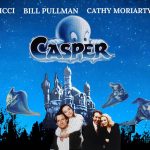Suspiria (1977)

**”Suspiria” (1977)** is an iconic Italian horror film directed by Dario Argento, known for its striking visual style, surreal atmosphere, and groundbreaking use of color and sound. As one of the most influential films in the horror genre, **”Suspiria”** has left an indelible mark on cinema with its unique blend of supernatural horror, artistic cinematography, and an unforgettable score by the progressive rock band Goblin.
The story follows Suzy Bannion (played by Jessica Harper), a young American ballet student who travels to Germany to attend the prestigious Tanz Dance Academy in Freiburg. From the moment she arrives, Suzy senses that something is terribly wrong at the school. The film opens with a striking scene of Suzy arriving at the academy in the midst of a torrential rainstorm, setting the tone for the otherworldly and nightmarish events that follow.
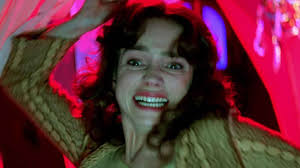
Suzy’s unease grows as strange and violent occurrences plague the academy. Students begin to disappear or die under mysterious circumstances, and the staff, led by the enigmatic Madame Blanc (played by Joan Bennett) and the stern Miss Tanner (played by Alida Valli), seem to be hiding dark secrets. Suzy eventually uncovers the terrifying truth: the dance academy is a front for a coven of witches, led by the malevolent Helena Markos, also known as the “Mother of Sighs,” one of the three ancient witches that form the mythos of Argento’s “Three Mothers” trilogy.
**”Suspiria”** is renowned for its use of color, particularly the bold and vivid primary colors that dominate the film’s visual palette. Argento, along with cinematographer Luciano Tovoli, used Technicolor film stock to create a hyper-stylized look that enhances the film’s surreal and dreamlike quality. The use of deep reds, blues, and greens creates an unsettling atmosphere, making the film feel like a living nightmare. The intense use of color is not just aesthetic but also serves to heighten the tension and unease throughout the film.
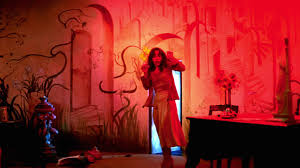
The film’s score by Goblin is another essential element that contributes to its lasting impact. The music is both eerie and aggressive, featuring haunting melodies, discordant sounds, and a relentless rhythm that underscores the film’s most terrifying moments. The score is so integral to the film’s identity that it almost becomes a character in itself, driving the narrative and amplifying the horror.
Argento’s direction in **”Suspiria”** is masterful, blending traditional horror elements with avant-garde filmmaking techniques. The film’s narrative is deliberately opaque, with a plot that is secondary to the mood and atmosphere. Argento focuses on creating a sensory experience that immerses the viewer in a world where logic is secondary to emotion and visual spectacle. The film’s pacing is deliberate, building tension through its unsettling imagery and soundscapes rather than relying on conventional scares.
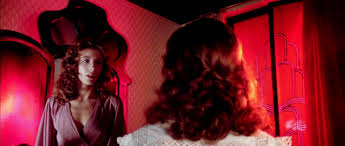
The film’s violence is stylized and almost operatic, with death scenes that are both gruesome and visually stunning. Argento’s use of gore is as artistic as it is shocking, contributing to the film’s reputation as a seminal work of the horror genre. These scenes are meticulously crafted, combining choreography, color, and sound to create moments of visceral terror that linger in the mind long after the film ends.
**”Suspiria”** is also notable for its exploration of themes such as fear of the unknown, the vulnerability of youth, and the corrupting power of evil. The witches represent an ancient, malevolent force that preys on the young and innocent, with the dance academy serving as a metaphor for the entrapment and manipulation of the protagonists. The film’s surreal narrative and visual style create an atmosphere where reality and nightmare blur, leaving the viewer disoriented and uneasy.
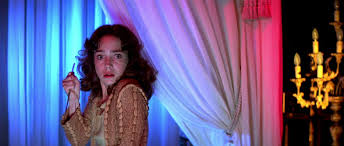
Jessica Harper’s performance as Suzy is a strong anchor in the midst of the film’s chaos. Her portrayal of a young woman gradually uncovering the horrific truth behind the academy is compelling, and she effectively conveys the vulnerability and determination of her character. The supporting cast, particularly Joan Bennett and Alida Valli, add to the film’s eerie atmosphere with their enigmatic and unsettling performances.
**”Suspiria”** has been widely recognized as a masterpiece of horror cinema and one of Dario Argento’s most influential works. Its impact extends beyond the horror genre, influencing filmmakers, artists, and musicians alike. The film’s combination of stunning visuals, innovative use of sound, and its bold approach to storytelling has secured its place as a cult classic and a touchstone of Italian cinema.
In 2018, **”Suspiria”** was reimagined in a remake directed by Luca Guadagnino, which paid homage to the original while offering a new interpretation of its themes and narrative. However, the 1977 version remains unparalleled in its unique vision and continues to be celebrated as one of the most visually and thematically rich horror films ever made.










